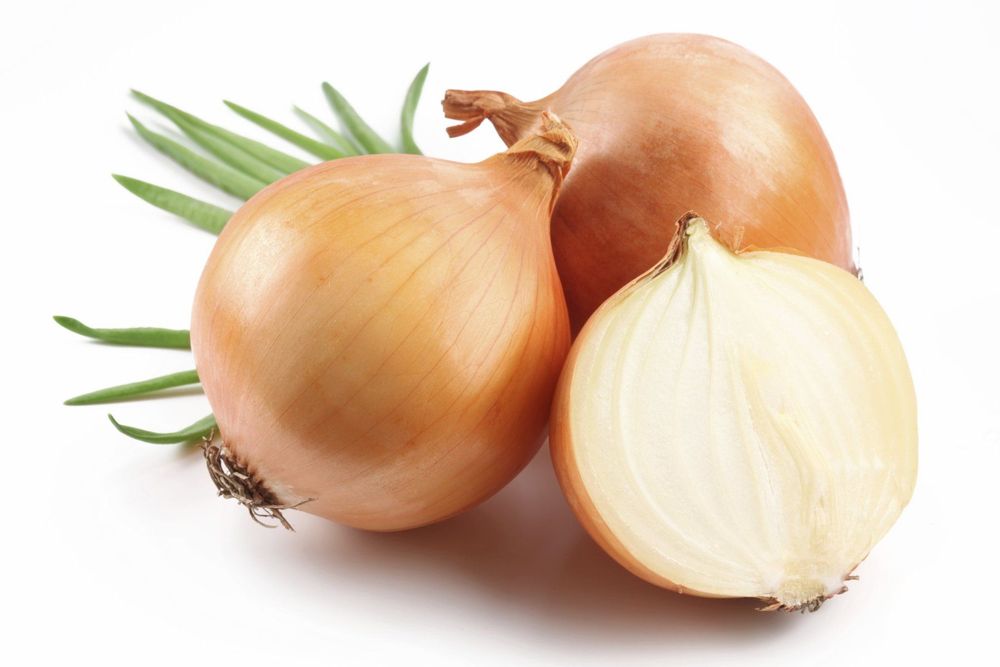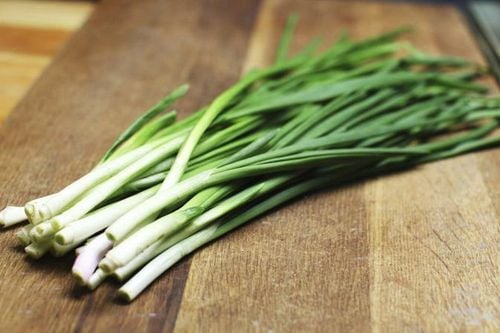Scallions and onions are commonly used in both Asian and European cuisines. The leaves and bulbs of these onions are edible and have a mild flavor that goes well with many different dishes. In particular, they bring many wonderful health benefits, such as fighting cancer, treating colds, aiding digestion and boosting brain health.
1. Characteristics of green onions
Green onions are also known as scallions, spring onions or Vietnamese onions. In some countries, green onions have different English names such as Green onions or Welsh onions. However, many people often confuse them with other types of onions, such as onions, so these names are rarely used.
In the onion family, there are many different types of onions, each with its own characteristics. For green onions, they are perennial herbs, with hollow, cylindrical green leaves, 30-50 cm long. Each green onion root can grow about 6 onion leaves, when they have enough time to grow, they will bloom white flowers on top of the leaves.
Unlike onions, green onions usually do not develop bulbs, the size of the green onion bulbs is only slightly larger than the stem. On average, the growing time for green onions is about 60 days. The outstanding advantage of this type of onion is that it can grow on many different types of soil, so green onions are very easy to grow and care for. The ideal time to harvest green onions is about 60 days from planting. At this time, the onion has not yet bloomed white flowers, the leaves have a certain freshness and the bulbs are not too big.
2. Characteristics of onions
Onions are a type of bulbous vegetable, with the scientific name Allium cepa L, belonging to the onion family. This herbaceous plant is often grown year-round, with long fibrous roots. Depending on different climates and cultivated soils, onions can develop about one or more buds.
Like green onions, onion leaves are cylindrical, hollow in the middle and pointed at the top. Flowers develop in the leaf axils and form pseudo-umbels, with drupes and light black seeds.
Onions are usually planted in late summer so that they grow during the winter, ready for harvest in the spring. Although onions typically last longer than scallions, they are still considered young onions, harvested when they are fully ripe.
You can recognize onions by their bulb, which is about the size of a small light bulb, round in shape, and white at the base. Onions also have a slightly stronger flavor than scallions.

Onion is a root vegetable with a distinctive flavor.
3. Differences in nutritional value
Green onions are one of the herbaceous plants with high nutritional value, their essential oils provide a large amount of allicin, which has outstanding antibacterial effects. The main nutritional components in green onions include:
Diallyl disulfide compound
Saccharose
Glucose
Trace elements, Anthocyanin, Quercetin
Antioxidants
Some antibiotics such as Allin, Allinsufit, Malic acid, Galantin Essential sources of vitamins, such as vitamins A, C and K (12g of green onions contain about 20 micrograms of vitamin)
For onions, they contain very few calories (only about 5 calories per medium onion), or 32 calories/100 grams. 100 grams of onions contain:
Calories: 32
Water: 89%
Carbs: 7.3 grams
Sugar: 2.3 grams
Protein: 1.8 grams
Fiber: 2.6 grams
Fat: 0.2 grams
Vitamin K: 173% of the Reference Daily Intake (RDI)
Vitamin C: 21% of the RDI
Folate: 16% of the RDI
In addition, onions are also a rich source of beneficial antioxidants and sulfur-containing compounds.

Green onions and onions contain essential micronutrients for the user’s health.
4. Uses of green onions and onions
4.1 Green onions:
Green onions have a very distinctive flavor, with a mild spicy taste that is easy to combine with everyday dishes. They are often used as a spice for dishes such as stews, stir-fried pork, pho… to make the dish look more attractive and delicious.
In addition, green onions are considered a medicine with very good effects on health, including antiseptic, blood circulation, improving the digestive system, or diuretic. In addition, because green onions are spicy and hot, they are often used to treat symptoms such as bloating, colds, headaches, runny nose, and cold stomach. In particular, green onions contain Allicin, which has strong antibacterial properties, preventing diphtheria, typhoid or cholera.
Moreover, green onions are also one of the natural herbs that have extremely effective beauty effects for women. They have the ability to treat acne and improve the skin very well.
4.2 Onions:
Onions are rich in B6, vitamin C, iron, manganese and potassium, which help fight colds, regulate blood pressure and improve cardiovascular health. In addition, folate in onions promotes metabolism and cell growth, which is essential for pregnant women.
In particular, onions contain compounds such as Allyl Disulphide, Allium and phytochemicals that help prevent cancer and diabetes, while regulating blood pressure and reducing blood vessel stiffness. When combined with garlic, onions can help treat conditions such as depression, inflammation, help prevent blood clotting, relieve pain and disinfect.
When cooked, onions provide a rich source of fiber, helping to enhance digestive and brain activities.





